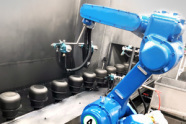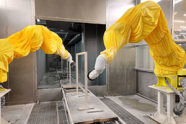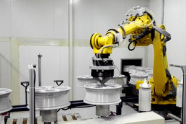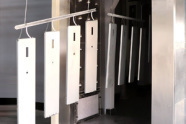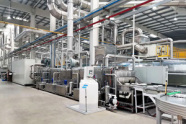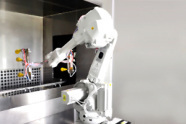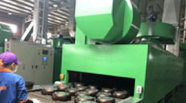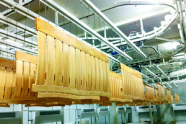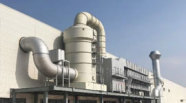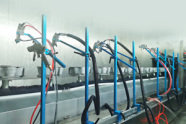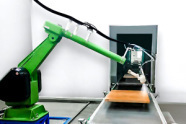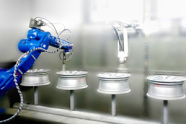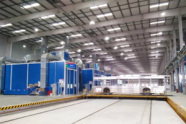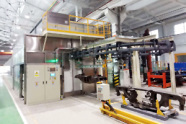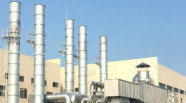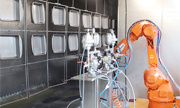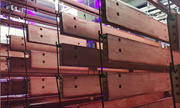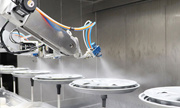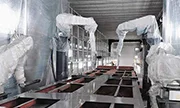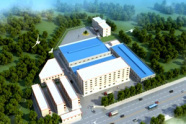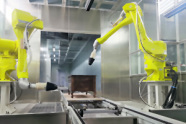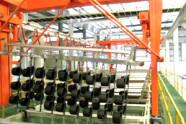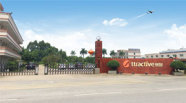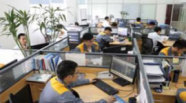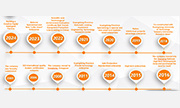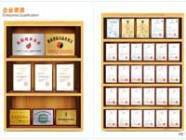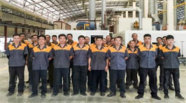All categories
Related News
22
2025
-
08
How to Build an Automated Cookware Non-Stick Coating Production Line?
Author:
Chuangzhi Coating
The coating quality of non-stick cookware is directly related to its safety and service life, and its coating process must meet strict requirements such as high temperature resistance, wear resistance, and no precipitation. Building an automated non-stick cookware coating production line needs to combine the characteristics of substrates such as aluminum and iron to achieve precise control of the entire process from pretreatment to finished products. As a professional manufacturer of coating line equipment, we have created an automated solution that balances efficiency and quality for the special-shaped structure of cookware (such as pot bottoms, walls, and handle connections) and the characteristics of non-stick coatings (such as Teflon and ceramic coatings).
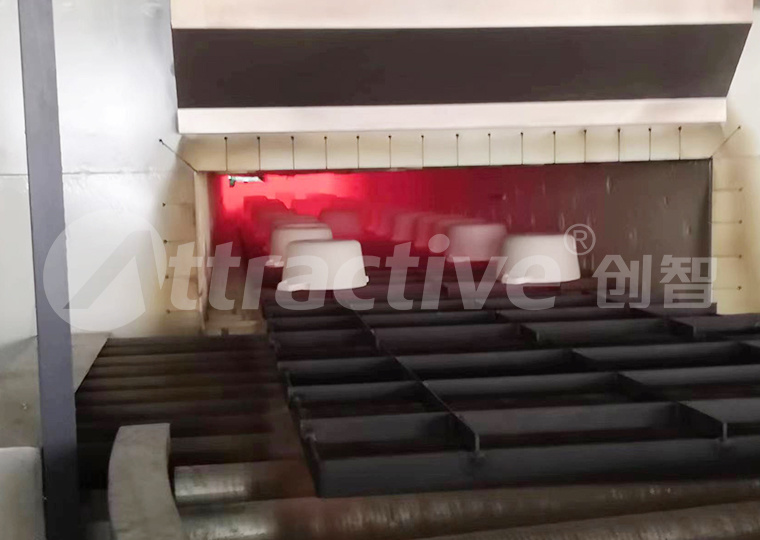
Preliminary Planning: Adapting to Production Capacity and Coating Types
The first step in building a production line is to clarify the production capacity and coating system to determine equipment configuration and line layout.
Production capacity planning should be based on cookware types (frying pans, woks, stockpots, etc.) and sizes (mainly 16-32cm in diameter). For an annual output of 1 million non-stick pans, the production line needs to handle 300-400 pieces per hour, with a line length of about 80-120 meters, using step-by-step conveying (positioning accuracy ±1mm) to ensure precise docking of spraying and curing stations. At the same time, space for multi-variety switching should be reserved to support rapid conversion of different coating systems (single/multi-layer).
Coating types determine core process parameters: Teflon coatings need to control curing temperature (380-400℃) and time (10-15 minutes) to ensure full cross-linking of resins; ceramic coatings require adjusting spraying viscosity (25-35s, Tu-4 cup) and curing curve (200-250℃ gradient heating). The line design must be compatible with the process differences between the two coatings to avoid cross-contamination.
Core Process Links: Fully Automated Precision Control
The core of the automated non-stick cookware coating production line lies in solving the coating problems of special-shaped parts through special equipment.
The pretreatment system needs to remove stamping oil, oxide layers and impurities on the cookware surface. It adopts the process of "ultrasonic degreasing → spray washing → drying": the ultrasonic tank (power 500W, frequency 28kHz) with neutral cleaning agent efficiently strips oil at 50-60℃; multi-stage spraying (pressure 0.2-0.3MPa) ensures no cleaning agent residue; the drying channel (80-100℃) uses hot air circulation to make the workpiece surface moisture content ≤0.5%. For aluminum cookware, a chemical polishing process can be added to improve surface finish (Ra≤0.8μm) and enhance coating adhesion.
The spraying system uses a combination of "robot + special spray gun". For the curved surface of the pot, a 4-axis spraying robot (repeat positioning accuracy ±0.05mm) is configured, equipped with a fan-shaped nozzle (atomization angle 60-90°), and the spraying path is automatically generated through 3D contour scanning. Different parameters are used for the pot bottom and wall: the pot bottom spraying pressure is 0.15-0.2MPa, and the film thickness is controlled at 20-25μm; the pot wall pressure is 0.1-0.15MPa, and the film thickness is 15-20μm to avoid edge paint accumulation. For dead corners such as handle connections, small auxiliary spray guns (diameter φ3mm) are equipped to ensure no missed coating.
The curing system needs to precisely control temperature and atmosphere. Teflon coatings use an infrared heating curing furnace with three-stage temperature control: preheating zone (150-200℃) → curing zone (380℃) → cooling zone (≤100℃) to avoid coating blistering caused by sudden high temperature rise. Ceramic coatings use a hot air circulation oven, which is kept at 200℃ for 5 minutes and then raised to 250℃, with a total curing time of 20 minutes. The wind speed in the furnace is controlled within 0.5m/s to prevent pinholes on the coating surface.
Intelligent Management System: Ensuring Consistency and Traceability
Automated production lines achieve stable and controllable coating quality through digital management.
The central control system (PLC + touch screen) monitors parameters of each station in real-time: data such as pretreatment bath concentration (deviation ±0.5%), spraying flow (accuracy ±1ml/min), and curing temperature (fluctuation ≤±5℃) are uploaded to the server in real-time. Each pot is given a unique QR code, recording information such as spraying time, operator, and test results, supporting full life cycle traceability.
The conveying system adopts servo drive, linked with spraying and curing rhythms. When a workpiece position deviation (>0.5mm) is detected, the system automatically pauses and alarms to avoid batch defects. During product changeover, preset programs are quickly called through the parameter library, with changeover time ≤10 minutes, meeting the needs of multi-variety flexible production.
Environmental Protection and Testing Configuration: Dual Guarantee of Compliance and Quality
Cookware coating must meet both environmental protection standards and food safety requirements.
Waste gas treatment for Teflon spraying volatiles adopts the process of "activated carbon adsorption + high-temperature incineration", with VOC removal rate ≥98% and emission concentration ≤20mg/m³. Wastewater treatment through "oil-water separation → coagulation precipitation → filtration" makes COD ≤80mg/L, reaching the reuse standard (reuse rate ≥70%).
Online testing sets three checkpoints: 100% inspection by coating thickness gauge (accuracy ±1μm) to ensure uniform film thickness; spot check by gloss meter (60° angle) to control the gloss of Teflon coating at 10-15GU; adhesion test by cross-cut method (spacing 1mm), requiring ≥4B level. Unqualified products are automatically diverted to the repair area to avoid entering the next process.
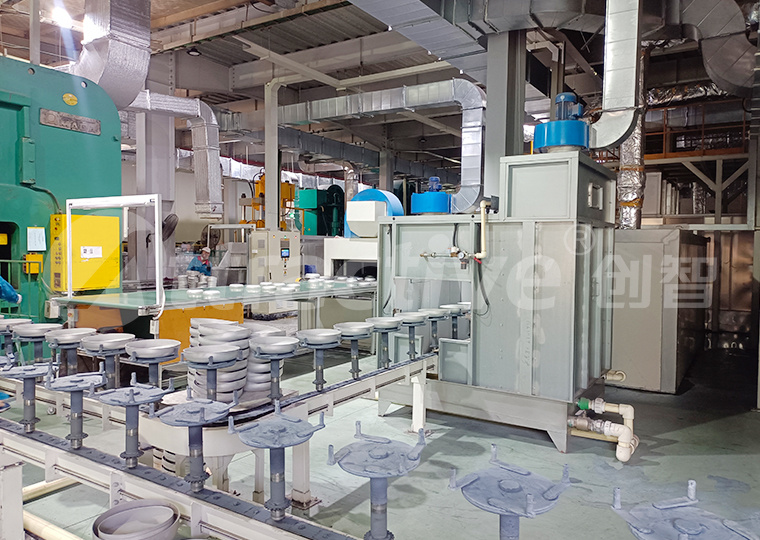
Application Effect: Case of a Cookware Enterprise
After a well-known cookware enterprise introduced this production line, key indicators improved significantly: the coating qualification rate increased from 86% to 99.3%, single-shift production capacity increased by 60%, and paint utilization rate rose from 65% to 85%. The products passed FDA, LFGB and other certifications, export volume increased by 40%, and annual new profits exceeded 5 million yuan.
Conclusion
Building an automated non-stick cookware coating production line must focus on "precision coating + safety compliance". Only through the coordination of customized pretreatment, intelligent spraying, precise curing, and digital management can the strict standards of non-stick pans be met. Professional equipment manufacturers can provide turnkey services from planning to commissioning according to enterprise product structure and production capacity needs, helping enterprises quickly put into production and occupy the high-end market.
Next Page

